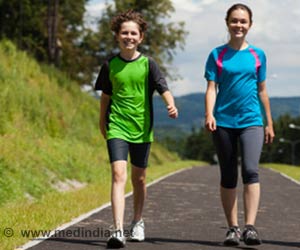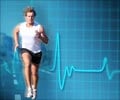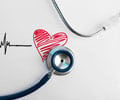Older adults with heart disease who engage in regular physical activity show lowered symptoms of heart disease.
- Older adults with heart disease suffer from loss of confidence and an inability to perform simple tasks.
- Regular physical activity can lower heart disease symptoms and improve confidence of older adults.
- Certain medications for heart disease can affect physical health of older adults, making them dependent.
- Lowering heart disease symptoms
- Lowering risk of heart failure, stroke or heart attacks
- Reducing frailty
- Improving erosions of strength associated with age
Aerobic Fitness
Aerobic fitness can be used to determine how effectively oxygen is transported during a period of prolonged exercise. This fitness tends to become insufficient with advancing age.Older adults with heart disease are therefore physically at a disadvantage due to
- Increased risk for frailty
- Slow walking
- Unintentional weight loss
- Exhaustion
- Lower levels of physical activity
Stressing the need to carry out physical activity to improve the health of older patients and the quality of life that they lead, Dr. Foreman said that this will especially hold true among patients who are in their 70s or 80s.
Cardiac rehabilitation
Another important method of aiding elderly patients in regaining their health and function is through cardiac rehabilitation. These programs provide- Counseling for exercises
- Adequate assistance in training for better health
- Ways to manage stress and depression
- Sufficient counseling on proper nutrition
- Methods of tobacco cessation
Tailor Physical Activity
The health care providers of older cardiac patients should focus on personal needs and goals of the patient when prescribing therapy, even in the absence of cardiac rehabilitation.- Resistance and balance training which will aid in lowering the risk of falls
- Walking every day for better health
- Yoga and tai chi for aerobic and strength training
- Carrying out additional tasks or chores at home
- Muscle pain due to cholesterol-lowering drugs
- Fatigue due to anti-ischemic drugs
- Dehydration, dizziness and falls due to blood pressure drugs
The onus should be on the medical practitioner to devise methods which will help the patient maintain normal physical activity. The physical capability of the patient should be assessed during every visit and a decline in physical activity should be noted. Loss in function after hospitalizations should also be assessed, along with details about reduction in muscle mass and functional setback.
There is an immediate need to ensure that older patients maintain a healthy lifestyle and are physically independent. This will help them maintain dignity as age advances.
Exercise and Cardiac disease
A study conducted by Dr. Douglas Darden and colleagues, titled “Physical Activity and Exercise for Secondary Prevention among Patients with Cardiovascular Disease”, described the importance of physical activity on preventing recurrence of a cardiac event. People who suffer from heart failure, coronary heart disease (CHD) and stroke will benefit significantly from being physically active. As the age of the population begins to increase, cardiac disease also increases. There should be effective lifestyle intervention strategies which will help lower the disease risk. Such studies will help health care providers in instructing cardiac patients to remain physically active which in turn will improve the health outcome of the patient.
References:
- Physical Activity and Exercise for Secondary Prevention among Patients with Cardiovascular Disease - (https://www.ncbi.nlm.nih.gov/pmc/articles/PMC3879796/)
















